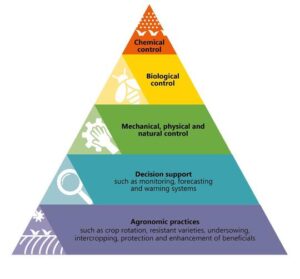Joel Williams Returns to Groundswell After a Three Hiatus
Back in March I was speaking all around Australia giving lectures to many different producers in different growing regions. Generally speaking, Australia has had three very wet years across the board and with this came some very high yielding crops with thanks to ample soil moisture stores. However, with moisture comes disease of course and despite the appreciation of good rainfall, some challenging growing conditions with very high disease pressure were also commonplace. Many producers found their typical fungicide programs were breaking down, less effective and not keeping up with the high disease burden. I couldn’t help but be reminded of the usual school of thought that suggests chemical fungicides are more consistent and effective than the highly variable alternatives – microbials/biofungicides, biostimulants, plant nutrition and the like. The environment always has the last laugh of course no matter how much we tinker around the edges with whichever inputs we use.
Like is often the case during sub-optimal growing conditions, farmers who are integrating multiple strategies to manage disease generally fared better, not placing all their eggs in the conventional fungicide basket. That’s the point of integrated pest management, if one strategy breaks down, there are other pillars to help prop up the system overall ultimately leading to additional resilience. This is where some of these alternative strategies can be very important and useful when working as part of a systems approach – they can be a compliment to conventional fungicides and therefore help reduce dependency on them.
With that in mind, on Wednesday afternoon I’ll be speaking about these alternative strategies as part of my lecture on Integrated Pest & Disease Management. The lecture will focus on 3 key themes;
(i) Designing with Diversity – make the job easier from the get-go by setting the system up for success with diverse stands of plants. Monocultures can have some advantages, but such uniformity can also be very prone to pest or disease outbreak.
(ii) Microbiome Management – whether it’s the soil or plant biome, beneficial microbes that live on or in plants can directly antagonise pests & disease and they can additionally induce the production defence chemicals within the plant.
(iii) Plant Nutrition – a nutritionally imbalanced plant will not only yield poorly, but its ability to defend itself is also compromised. The same nutrients that drive yield and plant growth can also support plant immunity heightening the plants’ ability to defend itself against would be attackers.
No one of these strategies is a silver bullet, but when combined and integrated into the production system they can support plant growth and increase the resilience of the system to pest outbreak.
After a three year hiatus, I’m very much looking forward to speaking at Groundswell this year, it’s always a wonderful time to catch up with new and familiar faces at such a magnificent venue and event. I hope you can join me for the session and wishing you all an enriching couple of days ahead.
Joel Williams, Integrated Agriculture


